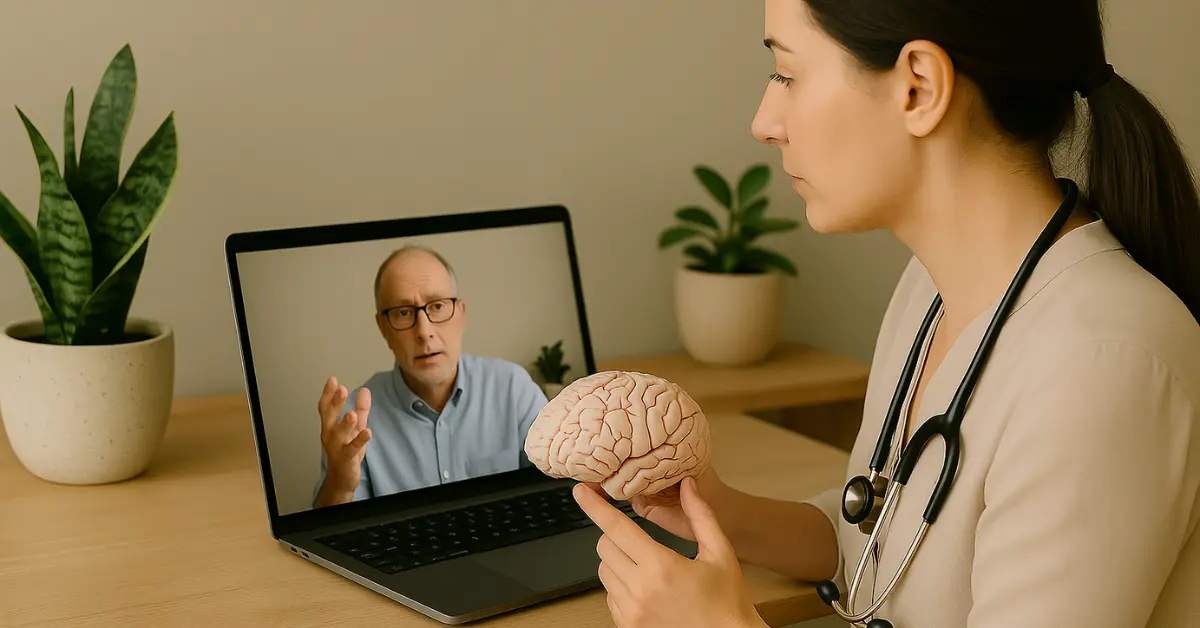Imagine speaking with your doctor from home and suddenly wondering about stroke – it’s a common concern. In Australia, around 24% of strokes in 2020 occurred in adults under 55. With roughly 112 strokes a day in Australia, understanding your risk is important.
In this guide, we’ll outline common questions patients ask during telehealth consultations about stroke risk, risk factors, and how online consultations can support ongoing health management
Stroke Prevention Support from Home
Telehealth makes it easier to discuss health concerns, including stroke risk, without needing to travel to a clinic. In 2023–24, about 23.6% of Australians had at least one telehealth consult.
Potential benefits of telehealth in this context include:
- Convenience – talk to a qualified doctor by phone or computer.
- Timely access – raise concerns about new symptoms (like dizziness or numbness) and be advised if urgent care is required.
- Comfort & privacy – discuss personal or family health history confidentially at home.
- Ongoing monitoring – doctors may recommend at-home blood pressure checks or other devices to help track health risks over time.
Stroke Risk Factors Discussed in Telehealth

Patients often ask: “What exactly increases my risk of stroke?” Doctors typically discuss both non-modifiable factors (age, genetics) and modifiable factors that can be managed.
Key modifiable risks include:
- High blood pressure – the most significant risk factor.
- Diabetes – which can increase stroke risk if not well controlled.
- Smoking – quitting reduces risk substantially.
- High cholesterol – diet and medication may help lower levels.
- Inactivity – regular exercise supports cardiovascular health.
During a telehealth consult, doctors may review home monitoring logs, discuss lifestyle adjustments, or recommend local tests if needed.
How Technology Supports Prevention and Recovery
Telehealth isn’t limited to video calls – digital tools can help patients manage risk and recovery:
- Apps and reminders – medication prompts and education modules may help support treatment adherence.
- Remote check-ins – scheduled calls or virtual physiotherapy sessions can provide ongoing support.
- Telerehabilitation – some patients recovering from stroke may participate in video-guided therapy or online exercise programs, depending on their needs.
Common Patient Questions in Telehealth
- Can stroke risk be assessed online?
Telehealth allows review of history, symptoms, and home monitoring results. If an in-person assessment or test is needed, your doctor can recommend it. - What if symptoms occur during a call?
Doctors can guide you through basic assessments, but will advise immediate emergency care if a stroke is suspected. - How is my information kept private?
Telehealth platforms use secure, encrypted systems and comply with national privacy regulations. - Are remote check-ups enough?
For some routine monitoring, yes. For other situations, in-person testing may still be required. Telehealth can complement, not replace, traditional care.
Making Stroke Risk Management More Accessible with Telehealth
Telehealth can provide a convenient way to learn more about stroke risk factors, ask questions, and receive ongoing support from qualified health professionals. It complements in-person care and helps make health management more accessible.
If you’d like to discuss your risk factors, you can book a consultation with a qualified doctor or nurse practitioner through CannaTelehealth. They can provide information, guidance, and referrals tailored to your circumstances.






